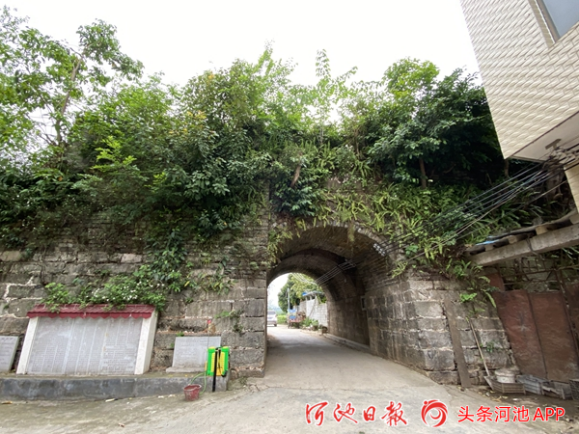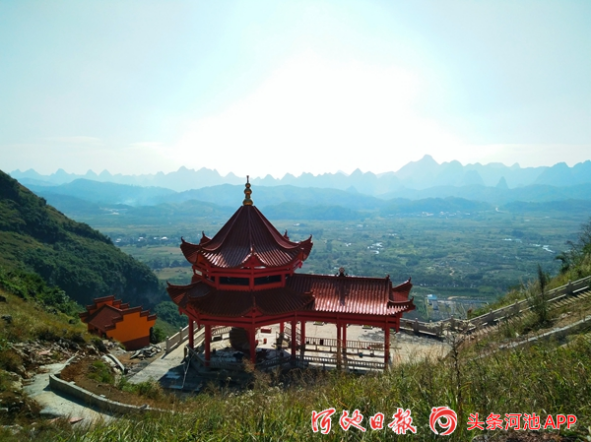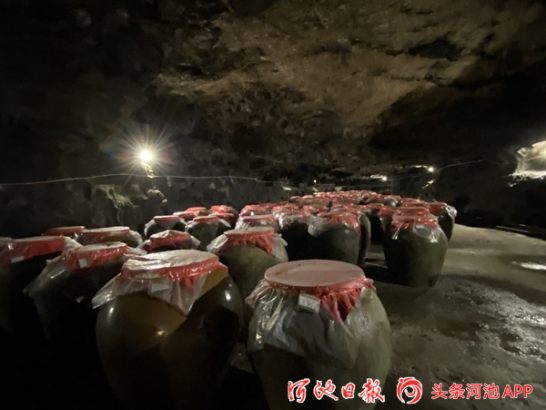Explore the cultural memory of Desheng town

The East Gate of Qianhusuo Ruins. [Photo/Hechi Daily]
Located 40 kilometers west of Yizhou district and bordering Huanjiang Yao autonomous county, Desheng town has historically been an important hub connecting the West China regions to the southern coastal areas.
Desheng town has a history of more than 1,000 years. It has rich natural landscapes and many cultural relics, including Huanggong Rock of the Song Dynasty (960-1279), the Qianhusuo Ruins of the Ming Dynasty (1368-1644), as well as Huilong Bridge, Wudao Bridge, and Jielong Bridge of the Qing Dynasty (1664-1911).
The Qinhusuo Ruins, also known as Desheng Ancient City, is a special cultural symbol. It can be dated back to the Ming Dynasty and was used as a training ground for the National Government Mechanized Forces during the Republic of China period. There are four gates and towers in the four directions of the town, but only the East Gate and the Watchtower remain today. In 1986, the Hechi Qianhusuo Ruins was listed as a cultural relic protection unit in Yizhou.
Standing in the middle of Desheng Ancient City, visitors can enjoy a bird’s view of the beautiful mountains of the town, as well as the famous Beishan Temple.

A pavilion on the way to Beishan Temple. [Photo/Hechi Daily]
The steps from the foot of the mountain to the top of Beishan Temple are Z-shaped. Going out of the Qianhusuo Ruins and walking along the village road, visitors come to the foot of Beishan Temple. Here, visitors have to climb up 1,297 stone steps to get to the top of the mountain in about half an hour. Two pavilions were built along the way for visitors to rest.
In 2015, the Desheng town government introduced 15 million yuan ($2.12 million) by means of investment promotion to rebuild Beishan Temple and to revitalize this ancient temple that has a history of more than 600 years. Nowadays, residents of Desheng town and surrounding areas usually come to the temple with flowers and cakes to pray for happiness and peace.
Another cultural site that is a must visit is the Desheng wine cellar. The local Honglan wine is very popular here. It is a kind of rice wine made of high-quality glutinous rice and red orchid grass by traditional folk crafts. After being made, it should be placed in a natural rock cave for more than three years before drinking.
The cave where the Honglan wine is stored is Dafengguang Cave. It is the most natural and ideal wine cellar as it has an annual temperature of 20 C. The cave now has a cellar history of more than 40 years since the Desheng Distillery began to store wine there in 1973.

Desheng wine cellar. [Photo/Hechi Daily]
Copyright © Hechi Municipal People's Government. All rights reserved.
Presented by China Daily.
京ICP备13028878号-6





